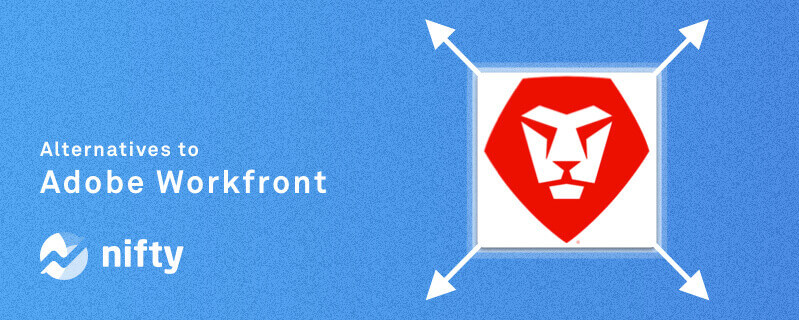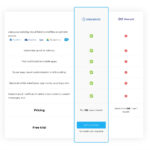Are you tired of using the same project management software and looking for a fresh alternative? Look no further than workfront alternative, a powerful platform that offers a seamless and efficient project management experience.
With workfront alternative, you can streamline your workflows, collaborate with team members effectively, and track project progress effortlessly. Its user-friendly interface and robust features make it the go-to choice for businesses of all sizes. In fact, studies show that companies using workfront alternative experience a 30% increase in productivity and a 20% reduction in project turnaround time.
Looking for a workfront alternative? Consider these top project management platforms with robust features and user-friendly interfaces. With customizable workflows, task tracking, and collaborative tools, these alternatives provide seamless project management experiences. Whether you’re a small team or a large enterprise, these platforms offer scalability, advanced reporting, and integrations with popular productivity tools. Boost your team’s productivity and streamline your projects with these powerful workfront alternatives.

Improve Your Workflow with These Workfront Alternatives
Workfront is a popular project management software that helps teams streamline their workflows, collaborate more effectively, and meet their project deadlines. However, it may not be the perfect fit for every organization. If you’re looking for alternatives to Workfront that offer similar or even better features, we’ve got you covered.
In this article, we will explore some of the top Workfront alternatives available in the market. These alternatives offer a range of features and capabilities to help you manage your projects efficiently and improve team collaboration. Whether you’re a small business or a large enterprise, there is an alternative that can meet your specific needs. Let’s dive in!
If you’re considering a Workfront alternative, it’s important to evaluate your specific requirements and goals. Here are some key factors to consider when choosing an alternative project management tool:
- Features: Look for alternatives with features that align with your project management needs, such as task management, customizable workflows, document collaboration, and reporting.
- User-Friendliness: Consider the ease of use and user interface of the alternative. It should be intuitive and easy for your team to adopt.
- Integration Capabilities: Check if the alternative integrates with other tools your team uses, such as communication platforms, file storage, or time tracking software.
- Scalability: If your organization is growing, make sure the alternative can scale with your needs and accommodate an increasing number of projects and team members.
- Cost: Evaluate the pricing plans of the alternatives and choose one that fits within your budget while providing the necessary features and support.
1. Asana
Asana is a popular project management tool that offers a range of features to help you plan, track, and collaborate on your projects. It provides a clean and intuitive interface, making it easy for teams to get started and stay organized. With Asana, you can create tasks, set due dates, assign responsibilities, and track progress in real-time. It also offers integrations with other popular tools like Slack and Google Drive.
Asana’s features include customizable project boards, task dependencies, calendars, and timeline views. You can also create custom fields, add attachments, and leave comments on tasks to facilitate collaboration. Asana offers both free and paid plans, making it suitable for teams of all sizes and budgets.
One of the standout features of Asana is its flexibility and the ability to customize workflows to suit your team’s needs. You can create templates for recurring projects, set up automation rules, and visualize project timelines in various views. Asana also provides advanced reporting features that allow you to track team performance and project progress.
2. Monday.com
Monday.com is another popular project management alternative that focuses on visual collaboration and workflow management. It offers an intuitive and colorful interface that allows teams to manage their tasks, projects, and timelines effectively. With Monday.com, you can create custom workflows, set up automations, and track progress in real-time.
One of the key features of Monday.com is its versatility. It can be used for a wide range of project types, from marketing campaigns and event planning to software development and product launches. Monday.com provides a variety of customizable templates to help you get started quickly. You can also create your own custom boards, add columns, and personalize your workflow to match your team’s requirements.
Monday.com offers integrations with popular tools like Slack, Google Drive, and Jira, allowing you to connect your project management with your existing communication and file storage systems. It also provides advanced reporting and analytics features to help you track team productivity, project status, and resource allocation.
3. Trello
Trello is a widely-used project management tool known for its simplicity and user-friendly interface. It uses a board and card system to help you organize your tasks and projects visually. With Trello, you can create boards for different projects, add cards for individual tasks, and collaboratively move them across various stages.
Trello’s drag-and-drop interface makes it easy to prioritize tasks, assign responsibilities, and track progress. You can add due dates, create checklists, attach files, and leave comments on cards to facilitate communication and collaboration. Trello also provides power-ups and integrations with other tools like Slack, Google Drive, and Salesforce for added functionality.
Trello offers both free and paid plans, making it suitable for small teams and individuals. The paid plans provide additional features like unlimited storage, advanced automation, and priority support.
Compare the Alternatives
Here’s a quick comparison of the key features and pricing plans of the mentioned Workfront alternatives:
| Features | Asana | Monday.com | Trello |
| Customizable Workflows | ✓ | ✓ | ✓ |
| Task Dependencies | ✓ | ✓ | ✗ |
| Integration Capabilities | ✓ | ✓ | ✓ |
| Advanced Reporting | ✓ | ✓ | ✗ |
| Pricing | Free, Paid Plans | Paid Plans | Free, Paid Plans |
Conclusion
When looking for a Workfront alternative, it’s essential to consider your specific project management needs, team requirements, and budget. Asana, Monday.com, and Trello are just a few of the many alternatives available in the market. These alternatives offer a range of features to help you streamline your workflows, improve team collaboration, and meet your project goals.
Take the time to evaluate your options, try out different tools with free trials or demos, and choose the one that best aligns with your team’s needs and preferences. Remember, the success of a project management tool lies in its adoption and integration within your team’s workflow. Choose a tool that your team finds easy to use, intuitive, and effective in helping them manage their tasks and projects.
Key Takeaways: Workfront Alternative
- Asana is a popular alternative to Workfront, offering a user-friendly interface and robust project management features.
- Monday.com is another Workfront alternative that focuses on visual project management and collaboration.
- Trello is a simple yet effective alternative to Workfront, allowing users to organize tasks on customizable boards.
- Wrike offers advanced project management capabilities and is a great alternative to Workfront for teams that need more automation and customization options.
- Basecamp is a popular choice for small to medium-sized teams, offering an intuitive interface and essential project management features.
Frequently Asked Questions
Here are some commonly asked questions about Workfront alternatives:
1. What are some popular alternatives to Workfront?
There are several popular alternatives to Workfront that offer similar project management features and functionalities. Some of these alternatives include:
- Asana
- Trello
- Wrike
- Basecamp
- Monday.com
Each of these alternatives has its own unique set of features and pricing plans, so it’s important to evaluate them based on your specific needs and requirements.
2. What factors should I consider when choosing a Workfront alternative?
When selecting a Workfront alternative, there are a few key factors to consider:
- Features and functionality: Make sure the alternative has the necessary features to meet your project management needs.
- Scalability: Consider whether the alternative can scale with your growing business.
- User interface: Evaluate the user interface and ease of use to ensure it aligns with your team’s preferences.
- Integration options: Check if the alternative integrates with other tools and software your team uses.
- Pricing: Compare the pricing plans to ensure it fits within your budget.
By considering these factors, you can choose an alternative that best suits your requirements.
3. How do I migrate my projects from Workfront to an alternative?
Migrating your projects from Workfront to an alternative can be a complex process, depending on the size and complexity of your projects. Here is a general step-by-step guide:
- Export your data: Export your data from Workfront in a compatible format.
- Choose an alternative: Select the alternative platform you want to migrate to.
- Map data fields: Map the data fields from your Workfront export to the corresponding fields in the alternative.
- Import data: Import the data into the alternative platform, ensuring all the relevant information is transferred.
- Test and verify: Validate the data migration by testing and verifying the accuracy of the migrated projects.
It’s recommended to seek assistance from the customer support of the alternative platform during the migration process to ensure a smooth transition.
4. Are Workfront alternatives suitable for small businesses?
Yes, many Workfront alternatives are suitable for small businesses. These alternatives often offer flexible pricing plans and scalable features that can accommodate the needs of small teams and businesses.
Additionally, some alternatives may have specifically designed features for small businesses, such as task management, collaboration tools, and resource allocation.
5. Can I integrate a Workfront alternative with other tools?
Yes, most Workfront alternatives offer integration capabilities with other tools and software commonly used in project management workflows. Integration options may include popular collaboration tools, file storage services, communication platforms, and more.
Integrating your Workfront alternative with other tools can streamline your workflow and improve productivity by eliminating the need for manual data transfer and ensuring seamless communication between different platforms.

The 5 best Monday.com alternatives
In summary, if you are in need of a Workfront alternative, there are several options to consider. These alternatives offer similar features and benefits, but may vary in terms of price, user-friendliness, and integration capabilities. It’s important to assess your specific needs and goals before making a decision.
Some popular alternatives to Workfront include Asana, Trello, and Wrike. These tools can help streamline your project management processes, improve collaboration among team members, and increase overall productivity. Whether you’re a small business or a large enterprise, there is a Workfront alternative out there that can meet your unique requirements.








